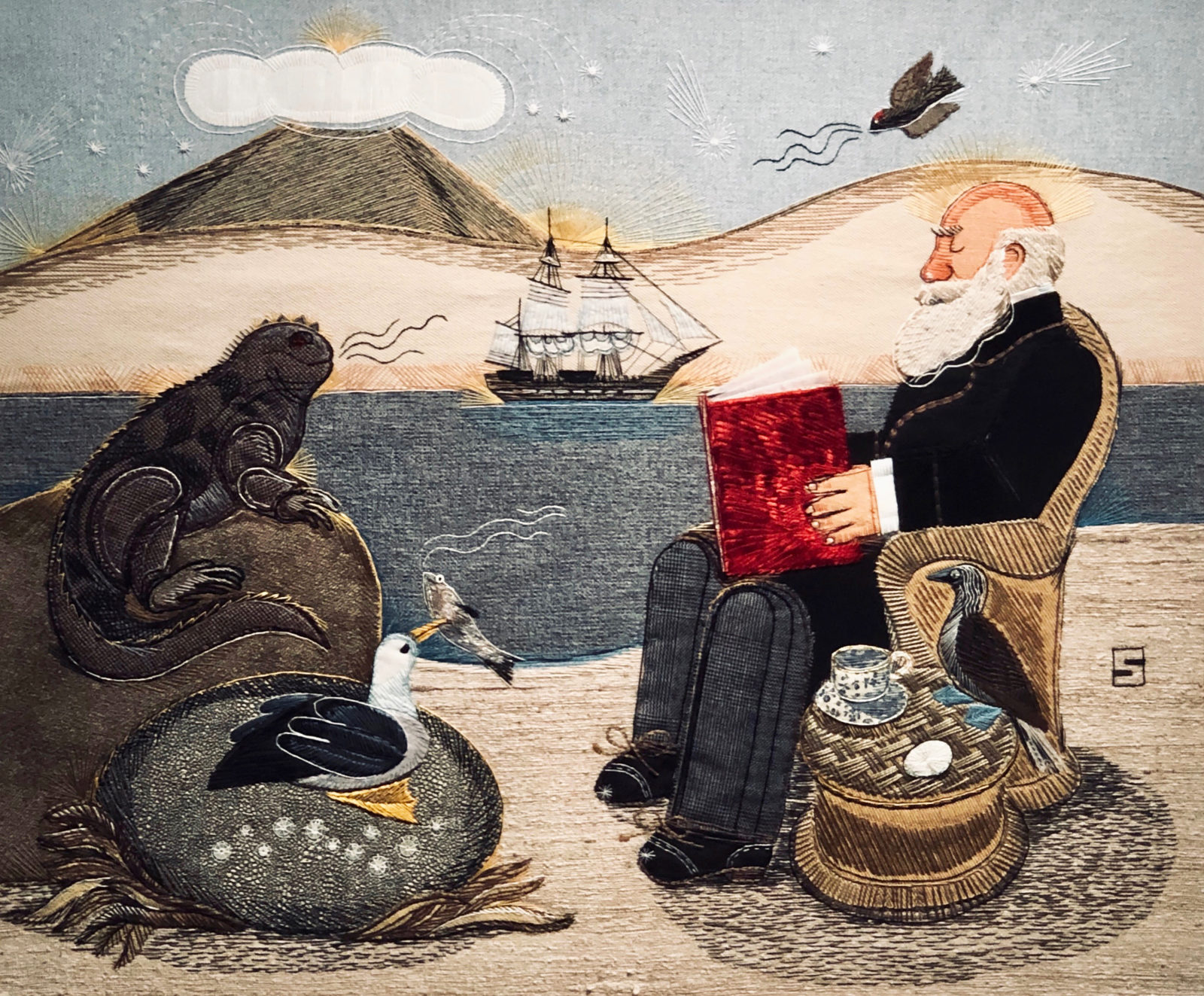
Sheila Bryant
Darwin Remembers
n.d.
Fabric appliqué and embroidery, 24.5 x 30 inches, 2020.7.1, Gift of the artist, 2020.7.1
Throughout her years of living and traveling internationally, textile artist Sheila Bryant always carried her embroidery projects with her. Made with layers of appliqued fabric and embroidery, Bryant often started a project while living in one country and finished it—months or years later—in another. Bryant creates portraits of people who intrigue her after extensively reading about their lives; such as Darwin or Nightingale—whose ideas changed our understanding of the world. Her other artworks focus on life situations, legends, or simply a lush bowl of delicious edibles—whatever catches her interest.
Sheila Bryant was introduced to fine embroidery while studying textile design at Glasgow School of Art in her native Scotland. After graduation in 1962, Bryant travelled extensively, living in varied cultures and experiencing indigenous traditions in Asia, North America, Europe, Africa, and the Middle East, where she was exposed to a rich array of textile techniques. She appreciates authentic folk elements in the arts of other nations and that is reflected in her personal style, which she describes as creativity with a touch of amusement.
Eventually, Bryant returned to live in Inverness, by Tomales Bay, where her husband Stuart had spent summers as a child. Today, Bryant is a resident of Point Reyes Station.
“I have always admired Charles Darwin (1809-1882) and read quite a bit about him. He is one of the most influential scientists in history. Darwin traveled the world and recognized patterns in nature that led to his theory of natural selection and evolution. Here, I have him remembering his famous travels on the ship, the Beagle, in the company of an iguana, a gull with a hooked bill, and a blue-footed booby bird—all from the Galapagos Islands. Above him is one of the many finches he observed, leading to his realization that they have different adaptations on each island he visited. In the distance is an active volcano that Darwin saw in South America, which added to his growing understanding of geology.” — Sheila Bryant










































